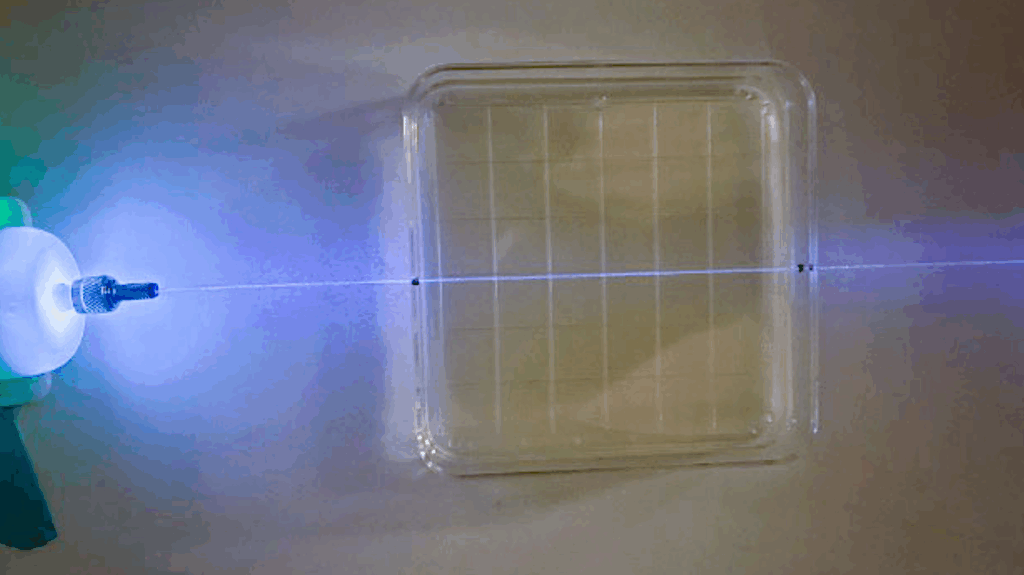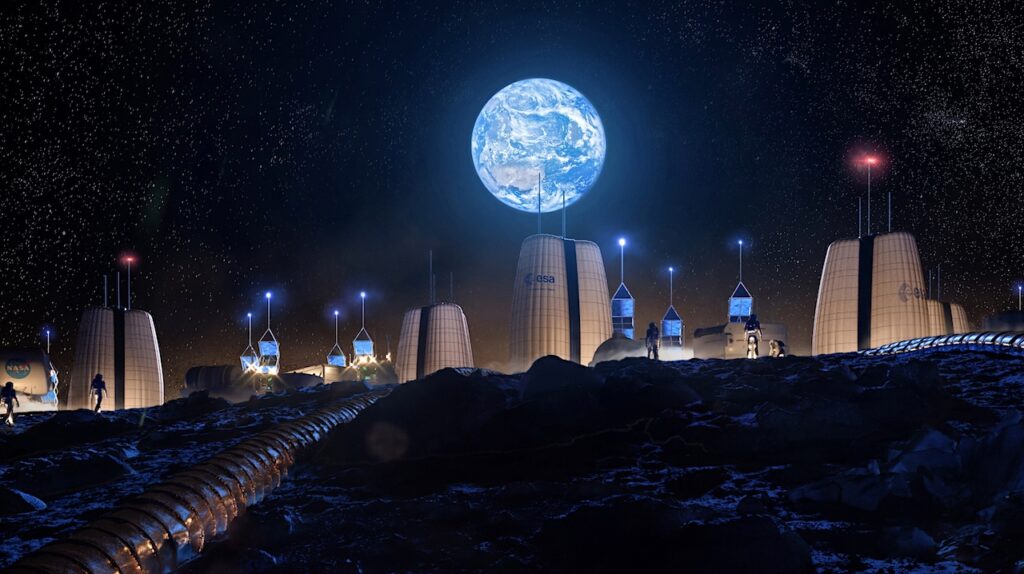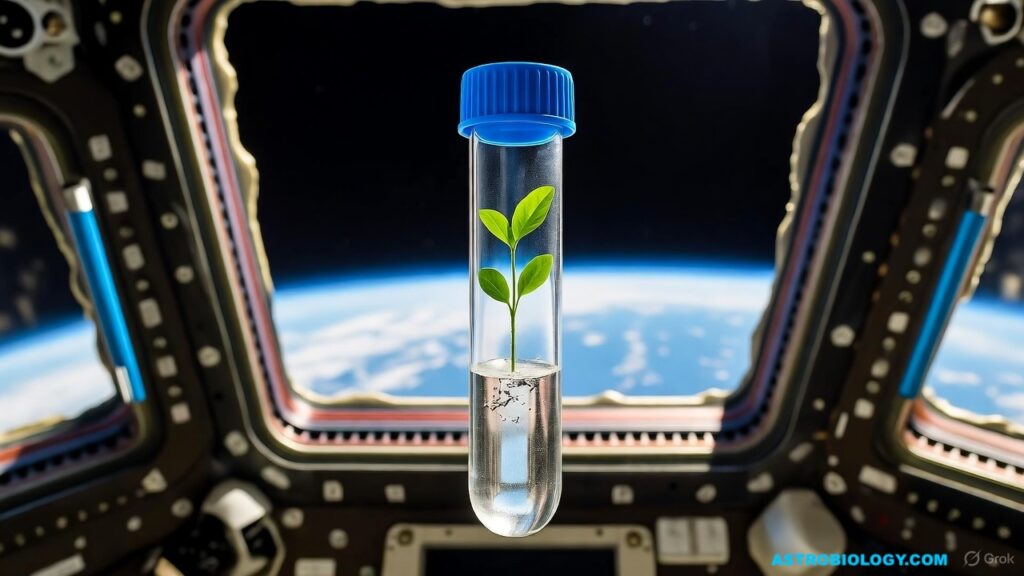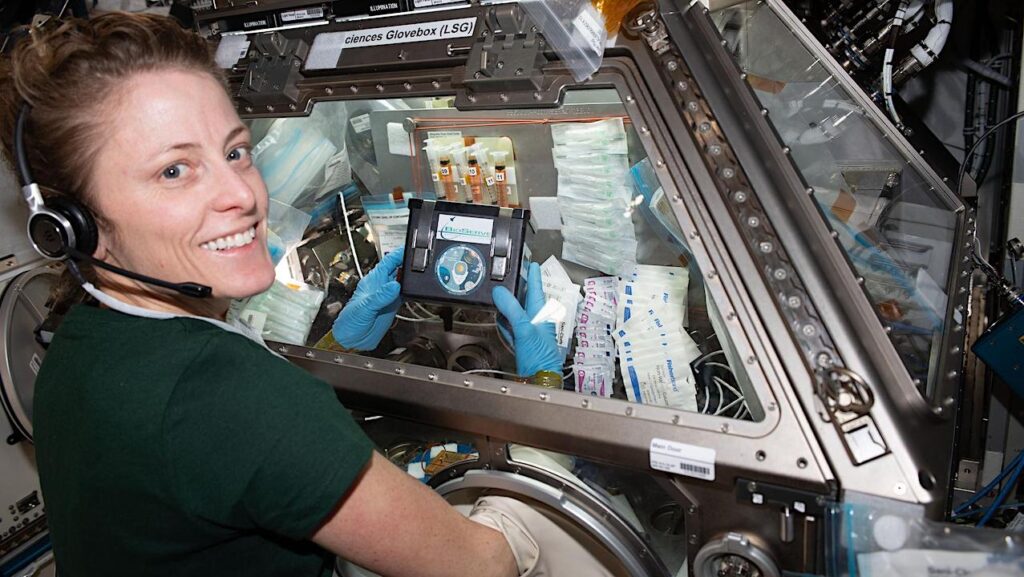NASA Spaceline Current Awareness List #1,079 15 December 2023 (Space Life Science Research Results)NASA Spaceline
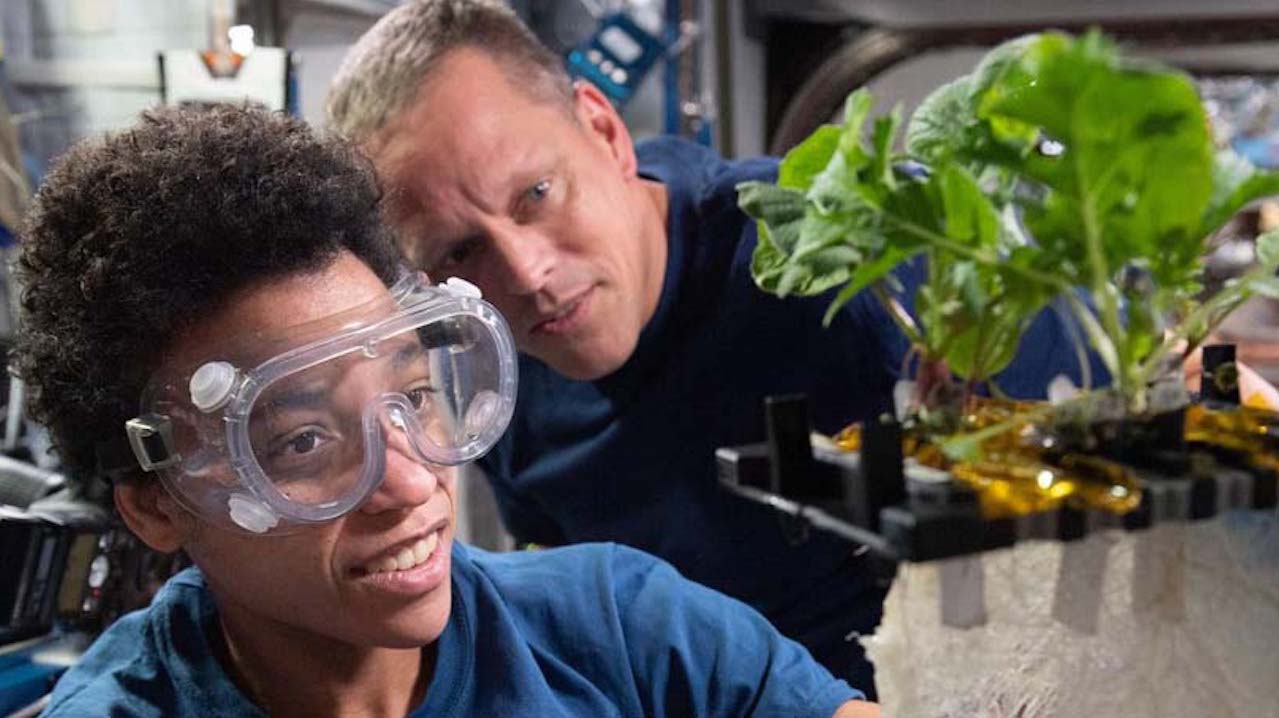
Space Biology conducted aboard the International Space Station
SPACELINE Current Awareness Lists are distributed via listserv and are available on the NASA Task Book website at https://taskbook.nasaprs.com/Publication/spaceline.cfm. Please send any correspondence to Shawna Byrd, SPACELINE Current Awareness Senior Editor, [email protected].
Call for articles to cite in the weekly lists: Authors at NASA Centers and NASA PIs—do you have an article that has recently published or will publish in the upcoming weeks within a peer-reviewed journal and is in the scope of space life sciences? If so, send it our way! Send your article to the email address mentioned above. Articles received by Wednesday will appear within that week’s list—articles received after Wednesday will appear the following week.
Papers deriving from NASA support:
- Dixit AR, Meyers AD, Richardson B, Richards JT, Richards SE, Neelam S, Levine HG, Cameron MJ, Zhang Y.Simulated galactic cosmic ray exposure activates dose-dependent DNA repair response and down regulates glucosinolate pathways in Arabidopsis seedlings.Front Plant Sci. 2023 Dec14;14:1284529.PI: S. Neelam, NASA Postdoctoral Program FellowshipNote: This article and the article directly below are part of Research Topic “Progressing the Future of Space Agriculture” (https://www.frontiersin.org/research-topics/52433/progressing-the-future-of-space-agriculture#overview). The Research Topic also includes articles from previous Current Awareness Lists #1,055 https://doi.org/10.3389/fpls.2023.1194753, #1,069 https://doi.org/10.3389/fpls.2023.1265458, and #1,070 https://doi.org/10.3389/fpls.2023.1266199. This article may be obtained online without charge.
Journal Impact Factor: 5.6
Funding: “This research was funded by the NASA Space Biology Program (GCR experiments in 2018 and RNAseq analysis) and the Human Research Program. SN was supported by NASA Postdoctoral Program (NNH15C048B) when conducting this experiment. AM was supported by NASA Postdoctoral Program (80HQTR21CA005).” - Olanrewaju GO, Haveman NJ, Naldrett MJ, Paul A-L, Ferl RJ, Wyatt SE.Integrative transcriptomics and proteomics profiling of Arabidopsis thaliana elucidates novel mechanisms underlying spaceflight adaptation.Front Plant Sci. 2023 Nov 27;14:1260429.PIs: A-L. Paul, S.E. WyattNote: This article and the article directly above are part of Research Topic “Progressing the Future of Space Agriculture” (https://www.frontiersin.org/research-topics/52433/progressing-the-future-of-space-agriculture#overview). This article may be obtained online without charge.
Journal Impact Factor: 5.6
Funding: “The author(s) declare financial support was received for the research, authorship, and/or publication of this article. This work was partially funded by the National Aeronautics and Space Administration (NASA) Science Mission Directorate grants NASA #80NSSC19K1481 to SW, and NASA#80NSSC19K0130 to A-LP and RF. NASA employees had a key role in payload management, delivery, and processing but otherwise had no direct involvement in sample processing or downstream analysis.” - Vallota-Eastman A, Bui C, Williams PM, Valentine DL, Loftus D, Rothschild L.Bacillus subtilis engineered for aerospace medicine: A platform for on-demand production of pharmaceutical peptides.Front Space Technol. 2023 Nov 30;4:1181843.Note: From the abstract: “Biologics, such as pharmaceutical peptides, have notoriously short shelf lives, insufficient for long-duration spaceflight missions to the Moon or Mars. To enable the sustainable presence of humans on the Moon or Mars, we must develop methods for on-site production of pharmaceutical peptides in space, a concept we call the Astropharmacy. Here, we present a proof-of-concept for the first step needed: a low-mass system for pharmaceutical production designed to be stable in space.” This article and an article below (Przybyla et al.) in the “Other” section are part of Research Topic “Technologies for Sustainable Space Exploration and Terrestrial Sustainability” (https://www.frontiersin.org/research-topics/48599/technologies-for-sustainable-space-exploration-and-terrestrial-sustainability#overview). Additional articles will be forthcoming and may be found in the link to the Research Topic. This article may be obtained online without charge.
Journal Impact Factor: Not available for this journal
Funding: “Funding was provided by the NASA Innovative Advanced Concepts (NIAC) Phase I, the National Science Foundation (NSF) Graduate Research Fellowship Program (GRFP) under Grant No. 1650114, the NSF California Louis Stokes Alliances for Minority Participation (LSAMP) Bridge to the Doctorate (BD) Fellowship under Grant No. HRD-1701365, and the NSF Non Academic Research Internships for Graduate Students (INTERN) Supplemental Funding Opportunity under Grant No. INTERN NSF DCL 21-013.” - Ravichandran A, Araque JC, Lawson JW.Predicting the functional state of protein kinases using interpretable graph neural networks from sequence and structural data.Proteins. 2023 Dec 11. Online ahead of print.Note: From the abstract: “Protein kinases are central to cellular activities and are actively pursued as drug targets for several conditions including cancer and autoimmune diseases. Despite the availability of a large structural database for kinases, methodologies to elucidate the structure–function relationship of these proteins (without manual intervention) are lacking. Such techniques are essential in structural biology and to accelerate drug discovery efforts. Here, we implement an interpretable graph neural network (GNN) framework for classifying the functionally active and inactive states of a large set of protein kinases by only using their tertiary structure and amino acid sequence.”
Journal Impact Factor: 2.9
Funding: “NASA Ames Research Center under the Prime Contract No. 80ARC020D0010.” - Wang E, Shuryak I, Brenner DJ.Quantifying the effects of neutron dose, dose protraction, age and sex on mouse survival using parametric regression and machine learning on a 21,000-mouse data set.Sci Rep. 2023 Dec 9;13:21841.Note: From the abstract: “The biological effects of densely-ionizing radiations such as neutrons and heavy ions encountered in space travel, nuclear incidents, and cancer radiotherapy, significantly differ from those of sparsely-ionizing photons and necessitate a comprehensive understanding for improved protection measures. Data on lifespan studies of laboratory rodents exposed to fission neutrons, accumulated in the Janus archive, afford unique insights into the impact of densely ionizing radiation on mortality from cancers and various organ dysfunction. We extracted and analyzed data for 21,308 individual B6CF1 mice to investigate the effects of neutron dose, fractionation, protraction, age, and sex on mortality.” This article may be obtained online without charge.
Journal Impact Factor: 4.6
Funding: “This work was supported by the National Aeronautics and Space Administration (NASA, Grant #80NSSC23M0099) and Columbia University.” - Weiss H, Tang J, Williams C, Stirling L.Performance on a target acquisition task differs between augmented reality and touch screen displays.Applied Ergonomics. 2024 Apr;116:104185.PI: L. StirlingNote: From the abstract: “Target acquisition tasks quantify human motor and perceptual abilities while performing discrete tasks to support interface design and sensorimotor assessments. This study investigated the effects of display, Touchscreen and Augmented Reality (AR), on a standardized 2D multidirectional target acquisition task.”
Journal Impact Factor: 3.2
Funding: “This study was supported by the National Aeronautics and Space Administration (NASA) Human Research Program Award 80NSSC20K0409.” - Koroli S, Buss K, Blain JM, Nakka GS, Hong M, McLean RJC, Plugge CM, Yang J.Draft genome sequence of Sphingomonas paucimobilis strain Sph5, isolated from tap water filtration membrane.Microbiol Resour Announc. 2023 Dec 1;e00345-23. Online ahead of print.PI: J. YangNote: This article may be obtained online without charge.
Journal Impact Factor: 0.303
Funding: “This research was funded by NASA Space Biology, grant number 80NSSC19K1597, and NASA BAC, grant number HS5HWWK1AAU5.” - Evans MA, Walsh K.Clonal hematopoiesis and transcatheter aortic valve replacement: A fatal connection.J Am Coll Cardiol Basic Trans Science. 2023 Nov;8(11):1436-8.PI: K. WalshNote: This article is an Editorial Comment.
Journal Impact Factor: 9.7
Funding: “This work was supported by NASA Human Research Program Grant Augmentation (80NSSC21K0549) to Dr. Evans, and National Institutes of Health grants AG073249, AG072095, HL142650, and HL152174 and NASA Human Research Program grant 80NSSC21K0549 (parent grant) to Dr. Walsh.”The following articles appear in Frontiers for Young Minds, a scientific journal for younger audiences ranging in age from 8-15 years old. From the website: “We seek to connect curious minds to the experts and information that will motivate them to ask informed and critical questions about real science throughout their lives. By working directly with scientists, we ensure that our content is of the highest quality. By working directly with kids, we help foster curiosity both in and out of the classroom and engage the next generation of citizens and scientists.” https://kids.frontiersin.org/about/journal - Nemec-Bakk A, Boerma M.How does space exploration affect the heart and blood vessels?Front Young Minds. 2023 Dec;11:1232651. Online ahead of print.PI: A. Nemec-Bakk, NASA Translational Research Institute for Space Health Postdoctoral FellowshipNote: This article may be obtained online without charge.
Journal Impact Factor: 0.7
Funding: “We would like to thank the NASA Translational Research Institute for Space Health for a postdoctoral fellowship (P0702) to AN-B which allows her to perform research on the effects of space radiation on the cardiovascular system.” - Hinshaw R, Lemere C.Space radiation may affect male and female brains differently.Front Young Minds. 2023 Dec;11:1237281. Online ahead of print.PI: C. LemereNote: This article may be obtained online without charge.
Journal Impact Factor: 0.7
Funding: “We would like to thank NASA for funding this research (grant numbers NNX14AI07G and 80NSSC18K0810). We would also like to thank the team at the NASA Space Radiation Laboratory who helped irradiate the mice, and we would like to thank General Electric for gifting important materials for the experiment.” - Werneth C.Protecting astronauts from space radiation.Front Young Minds. 2023 Dec;11:1223979.Note: This article may be obtained online without charge.
Journal Impact Factor: 0.7
Funding: “This work was supported by the Human Research Program of the Human Exploration and Operations Mission Directorate of the National Aeronautics and Space Administration.”
Other papers of interest:
- Hwang H, Rampoldi A, Forghani P, Li D, Fite J, Boland G, Maher K, Xu C.Space microgravity increases expression of genes associated with proliferation and differentiation in human cardiac spheres.npj Microgravity. 2023 Dec 9;9:88.Note: ISS results. This article may be obtained online without charge.
- Kimura S, Ishikawa S, Hayashi N, Fujita K, Inatomi Y, Suzuki S.Bacterial and fungal bioburden reduction on material surfaces using various sterilization techniques suitable for spacecraft decontamination.Front Microbiol. 2023 Dec 13;14:1253436.Note: This article is part of Research Topic “The Impact of the Space Environment on Microbial Growth and Behavior” (https://www.frontiersin.org/research-topics/27130/the-impact-of-the-space-environment-on-microbial-growth-and-behavior#overview). The Research Topic also includes articles from previous Current Awareness Lists #1,009 https://doi.org/10.3389/fmicb.2022.877625, https://doi.org/10.3389/fmicb.2022.893071, and https://doi.org/10.3389/fmicb.2022.909997; #1,041 https://doi.org/10.3389/fmicb.2023.1090740; #1,046 https://doi.org/10.3389/fmicb.2023.1155726; #1,050 https://doi.org/10.3389/fmicb.2023.1150224; and #1,069 https://doi.org/10.3389/fmicb.2023.1176582. This article may be obtained online without charge.
- Miranda S, Vermeesen R, Radstake WE, Parisi A, Ivanova A, Baatout S, Tabury K, Baselet B.Lost in Space? Unmasking the T cell reaction to simulated space stressors.Int J Mol Sci. 2023 Nov 29;24(23):16943.Note: A random positioning machine was used in this study. This article is part of Special Issue “Inflammatory Responses and Immunity under Stress” (https://www.mdpi.com/journal/ijms/special_issues/OO41Z9081D). Additional articles will be forthcoming and may be found in the Special Issue. This article may be obtained online without charge.
- Parsa A, Ghadi G, Jason B, Haig A, Alan C.Utility of ultrasound in managing acute medical conditions in space: A scoping review.Ultrasound J. 2023 Dec 12;15(1):47. Review.Note: This article may be obtained online without charge.
- Przybyla C, Bonnefoy J, Paounov R, Debiol A, Dutto G, Mansuy E, Lallement S, Coste F, Geffroy B, Frippiat JP.Embryogenesis of an aquaculture fish (Dicentrarchus labrax) under simulated altered gravity.Front Space Technol. 2023 Oct 9;4.Note: A random positioning machine was used in this study. From the abstract: “Food production and balanced nutrition will be a key challenge for residents of a future base on the Moon or Mars. As a complement to photosynthetic organisms, space aquaculture could provide the range of amino acids required to maintain health. This would rely on shipping fertilized aquaculture fish eggs to the Moon. To determine the feasibility of this, this study sought to test the influence of the conditions of a lunar mission—such as hypergravity during rocket launch and microgravity during the journey—on fish embryos and young larvae.” This article and an article above (Vallota-Eastman et al.) in the “NASA” section are part of Research Topic “Technologies for Sustainable Space Exploration and Terrestrial Sustainability” (https://www.frontiersin.org/research-topics/48599/technologies-for-sustainable-space-exploration-and-terrestrial-sustainability#overview) and may be obtained online without charge.
- Saveko AA, Netreba AI, Shved DM, Shpakov AV, Rozanov IA, Gushin VI, Tomilovskaya ES.[Evaluation of crew functional capabilities during extravehicular activity after long-term isolation in the ground model of the space station.]Aviakosm Ekolog Med. 2023;57(6):18-27. Russian.
- Soldatov PE, Mednikova EI, Gurieva TS, Dzhalilova DS, Tiurin-Kuzmin AY, Shulaguin YA, Morozova YA, Krychenkov DA, Soloviev AI.[Comprehensive assessment of animals in the course of modeling maintenance conditions onboard spacecraft Bion-M2 with various experimental types of diet.]Aviakosm Ekolog Med. 2023;57(6):58-67. Russian.
- Zakharov SY, Baranov MV, Kaspransky RR.[Effects of the total duration of spaceflight on the structure of morbidity and severity of the course of diseases among veteran cosmonauts based on the results of an in-depth medical examination.]Aviakosm Ekolog Med. 2023;57(6):5-10. Russian.
- Le Roy B, Martin-Krumm C, Gille A, Jacob S, Vigier C, Laborde S, Claverie D, Besnard S, Trousselard M.Evaluation of taVNS for extreme environments: An exploration study of health benefits and stress operationality.Front Neurol. 2023 Nov 22;14:1286919.Note: This article is part of Research Topic “Neuromodulation by the Ear: Beyond Non-Invasive Vagus Nerve Stimulation” (https://www.frontiersin.org/research-topics/48007/neuromodulation-by-the-ear-beyond-non-invasive-vagus-nerve-stimulation#overview). This article may be obtained online without charge.
- Ermolaev ES, Parshin KS, Shulaguin YA, Zaripov RN, Diachenko AI.[Effect of 21-day dry immersion on ventilation response of the respiration system to increasing hypercapnia.]Aviakosm Ekolog Med. 2023;57(66):28-34. Russian.
- Fomina EV, Ganicheva AA, Kokueva MA, Ustiugov VN.[Predicting physical performance of cosmonauts: First experiments on the choice of a mathematical model.]Aviakosm Ekolog Med. 2023;57(6):11-7. Russian.Note: This article may be obtained online without charge.
- Komissarova DV, Ilyin VK, Usanova NA, Morozova YA, Priputnevich TV, Muravieva VV, Bairamova GR, Mikhanoshina NV.[Vaginal and cervical microbiota of women participating in isolation experiments of various durations.]Aviakosm Ekolog Med. 2023;57(6):52-57. Russian.
- Vilchinskaya NA, Turtikova OV, Mirzoev TM, Shenkman BS.[Differentiation of myoblasts isolated from rat’s m. soleus following hindlimb unloading is accompanied by p27kip1 dephosphorylation and increased apoptosis.]Aviakosm Ekolog Med. 2023;57(6):44-51. Russian.
- Dong R, Liu S, Li Y, Gao F, Gao K, Chen C, Qian Z, Li W, Yang Y.Revisiting hemodynamics and blood oxygenation in a microfluidic microvasculature replica.Microvasc Res. 2024 Mar;152:104640.Note: From the abstract: “The complexity of microvascular circulation has led to the development of advanced imaging techniques and biomimetic models. This study developed a multifaceted microfluidic-based microdevice as an in vitro model of microvasculature to replicate important geometric and functional features of in vivo perfusion in mice.”
- Velichko VV, Tikhomirov AA, Ushakova SA, Barsukova OV, Khizhniak SV.[Increasing plant productivity by improvement of soil-like substrate air exchange as applied to the biological life support system.]Aviakosm Ekolog Med. 2023;57(6):68-76. Russian.
- Yasnetsov VV, Ivanov YV, Karsanova SK, Yasnetsov VV.[Investigation of anti-motion sickness activity of new nicotinic acid derivatives.]Aviakosm Ekolog Med. 2023;57(6):94-97. Russian.


